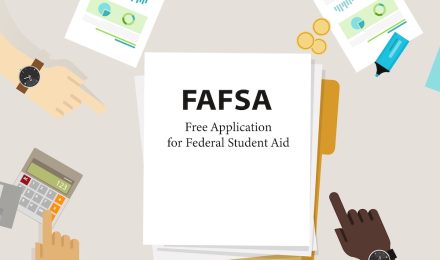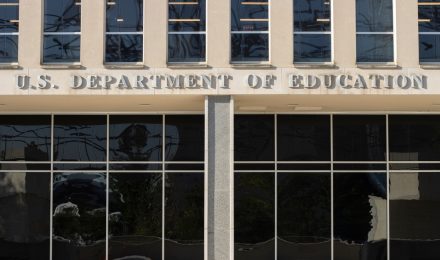Federal grants remain one of the most important tools in the U.S. financial aid system, especially for students from low- and middle-income families. Unlike loans, grants do not require repayment, making them a cornerstone of equitable access to higher education. Among these, the Pell Grant is the flagship program, serving millions of undergraduates each year.
In 2025, the Pell Grant program and related federal aid mechanisms are undergoing significant changes. These adjustments reflect a combination of budgetary priorities, FAFSA reform, and efforts to simplify aid delivery. While the new rules promise to increase transparency, their impact will vary widely depending on student background, institutional type, and long-term policy implementation.
The Role of Pell Grants in College Affordability
The Pell Grant program was created in the 1970s to make college more accessible for students from lower-income families. It remains the largest source of federal grant aid, with awards tied to family income, household size, and the cost of attendance. For decades, Pell has been a lifeline for students who would otherwise struggle to finance tuition, fees, and living expenses.
However, even as the maximum Pell award has risen, it has not kept pace with the rapid growth of tuition and related costs. In the 1970s, Pell Grants covered the majority of tuition at public universities. Today, they cover only a fraction, leaving many students to rely on loans or work while enrolled.
2025 Updates to Pell Grant Eligibility
The 2025 budget law introduced several modifications to Pell Grants designed to expand eligibility and streamline calculation:
- The Student Aid Index (SAI), which replaced Expected Family Contribution (EFC) under FAFSA simplification, now plays a central role in Pell determinations. Families with negative or very low SAI values are more likely to qualify for the maximum Pell award.
- Adjustments were made to account for inflation, modestly increasing the maximum grant size. However, the increase falls short of what advocates argue is necessary to keep pace with tuition.
These reforms aim to ensure that the most financially vulnerable households receive the strongest support, while simplifying the application process for millions of families.
FAFSA Simplification and Its Impact on Grants
The “Better FAFSA” initiative is tightly linked to Pell Grant access. By reducing the number of questions and aligning income data with IRS tax records, FAFSA reform is expected to make eligibility calculations clearer and reduce errors. This matters because grant eligibility often hinges on small differences in reported family income.
Despite these intentions, the rollout has faced technical delays. Students who encounter glitches may experience disruptions in their financial aid timelines, complicating enrollment decisions. Institutions and policymakers are watching closely to ensure that families do not lose grant opportunities because of processing errors.
Expansion for Incarcerated Students
One noteworthy change is the full reinstatement of Pell eligibility for incarcerated students. For decades, those in prison were excluded from accessing Pell Grants, a policy reversed gradually over recent years. In 2025, this reinstatement is fully operational, allowing correctional education programs to expand. Proponents argue this not only improves reentry outcomes but also strengthens workforce participation after release.
Distributional Effects
The 2025 reforms are likely to benefit some groups more than others. Families with very low incomes stand to gain the most, especially those with multiple children in college at the same time. Meanwhile, middle-income families may find that their grant eligibility is limited, even as loan borrowing caps tighten.
This distribution reflects a policy choice: prioritizing limited grant dollars for households with the greatest financial need. However, it may leave families who fall just above Pell thresholds struggling to cover costs, particularly at private institutions with high tuition.
Institutional Impact
Colleges and universities that enroll a large share of Pell recipients — such as community colleges and regional public universities — will see direct effects from these changes. Expanded Pell access could stabilize enrollment for these institutions, many of which serve first-generation and underrepresented students. By contrast, highly selective private institutions may see smaller relative shifts, since Pell recipients often make up a smaller portion of their student bodies.
At the same time, institutions must prepare for changes in Parent PLUS borrowing, which could offset Pell gains for some families. A university that benefits from increased Pell awards may still lose students if capped PLUS loans leave parents unable to close the remaining financial gap.
Challenges That Remain
While the reforms are notable, several challenges persist. Pell Grants remain well below the level needed to make college affordable without additional borrowing. Advocates continue to push for doubling the maximum Pell award, a proposal that has gained political momentum but remains financially difficult in a constrained federal budget environment.
Another concern is the complexity of aligning federal grants with state aid programs. Each state has its own formula and timing, and changes in federal rules can create mismatches that delay or reduce aid delivery. Without careful coordination, students may face confusion when trying to assemble their full aid package.
Preparing for the New System
For families, the most important step is to understand how the Student Aid Index interacts with Pell eligibility. Using online calculators and consulting with financial aid offices can help households project whether they will qualify for grants and in what amounts. Students should also explore state-level grant opportunities, institutional aid, and work-study programs to fill remaining gaps.
Advisors recommend that families file the FAFSA as early as possible, despite technical frustrations, to ensure that they receive the maximum grant support available. With limited funds and high demand, timely applications can make a meaningful difference.
Conclusion
The Pell Grant remains a vital part of America’s higher education financing system, and the 2025 reforms represent both progress and limitations. While expanded eligibility and improved FAFSA alignment should help the neediest families, the overall grant amounts remain insufficient to fully address rising college costs.
Students from the lowest-income households are the clear winners under the new rules, while middle-income families may continue to struggle with affordability as other federal loan options shrink. For policymakers, the challenge ahead is to balance fiscal responsibility with the goal of ensuring equitable access to higher education.
References
- U.S. Department of Education – Pell Grants
- HEAG – 2025 Budget Law: Key Changes to Student Aid Programs
- The Institute for College Access & Success – Pell Grant Data
Federal grants remain one of the most important tools in the U.S. financial aid system, especially for students from low- and middle-income families. Unlike loans, grants do not require repayment, making them a cornerstone of equitable access to higher education. Among these, the Pell Grant is the flagship program, serving millions of undergraduates each year.
In 2025, the Pell Grant program and related federal aid mechanisms are undergoing significant changes. These adjustments reflect a combination of budgetary priorities, FAFSA reform, and efforts to simplify aid delivery. While the new rules promise to increase transparency, their impact will vary widely depending on student background, institutional type, and long-term policy implementation.
The Role of Pell Grants in College Affordability
The Pell Grant program was created in the 1970s to make college more accessible for students from lower-income families. It remains the largest source of federal grant aid, with awards tied to family income, household size, and the cost of attendance. For decades, Pell has been a lifeline for students who would otherwise struggle to finance tuition, fees, and living expenses.
However, even as the maximum Pell award has risen, it has not kept pace with the rapid growth of tuition and related costs. In the 1970s, Pell Grants covered the majority of tuition at public universities. Today, they cover only a fraction, leaving many students to rely on loans or work while enrolled.
2025 Updates to Pell Grant Eligibility
The 2025 budget law introduced several modifications to Pell Grants designed to expand eligibility and streamline calculation:
- The Student Aid Index (SAI), which replaced Expected Family Contribution (EFC) under FAFSA simplification, now plays a central role in Pell determinations. Families with negative or very low SAI values are more likely to qualify for the maximum Pell award.
- Adjustments were made to account for inflation, modestly increasing the maximum grant size. However, the increase falls short of what advocates argue is necessary to keep pace with tuition.
These reforms aim to ensure that the most financially vulnerable households receive the strongest support, while simplifying the application process for millions of families.
FAFSA Simplification and Its Impact on Grants
The “Better FAFSA” initiative is tightly linked to Pell Grant access. By reducing the number of questions and aligning income data with IRS tax records, FAFSA reform is expected to make eligibility calculations clearer and reduce errors. This matters because grant eligibility often hinges on small differences in reported family income.
Despite these intentions, the rollout has faced technical delays. Students who encounter glitches may experience disruptions in their financial aid timelines, complicating enrollment decisions. Institutions and policymakers are watching closely to ensure that families do not lose grant opportunities because of processing errors.
Expansion for Incarcerated Students
One noteworthy change is the full reinstatement of Pell eligibility for incarcerated students. For decades, those in prison were excluded from accessing Pell Grants, a policy reversed gradually over recent years. In 2025, this reinstatement is fully operational, allowing correctional education programs to expand. Proponents argue this not only improves reentry outcomes but also strengthens workforce participation after release.
Distributional Effects
The 2025 reforms are likely to benefit some groups more than others. Families with very low incomes stand to gain the most, especially those with multiple children in college at the same time. Meanwhile, middle-income families may find that their grant eligibility is limited, even as loan borrowing caps tighten.
This distribution reflects a policy choice: prioritizing limited grant dollars for households with the greatest financial need. However, it may leave families who fall just above Pell thresholds struggling to cover costs, particularly at private institutions with high tuition.
Institutional Impact
Colleges and universities that enroll a large share of Pell recipients — such as community colleges and regional public universities — will see direct effects from these changes. Expanded Pell access could stabilize enrollment for these institutions, many of which serve first-generation and underrepresented students. By contrast, highly selective private institutions may see smaller relative shifts, since Pell recipients often make up a smaller portion of their student bodies.
At the same time, institutions must prepare for changes in Parent PLUS borrowing, which could offset Pell gains for some families. A university that benefits from increased Pell awards may still lose students if capped PLUS loans leave parents unable to close the remaining financial gap.
Challenges That Remain
While the reforms are notable, several challenges persist. Pell Grants remain well below the level needed to make college affordable without additional borrowing. Advocates continue to push for doubling the maximum Pell award, a proposal that has gained political momentum but remains financially difficult in a constrained federal budget environment.
Another concern is the complexity of aligning federal grants with state aid programs. Each state has its own formula and timing, and changes in federal rules can create mismatches that delay or reduce aid delivery. Without careful coordination, students may face confusion when trying to assemble their full aid package.
Preparing for the New System
For families, the most important step is to understand how the Student Aid Index interacts with Pell eligibility. Using online calculators and consulting with financial aid offices can help households project whether they will qualify for grants and in what amounts. Students should also explore state-level grant opportunities, institutional aid, and work-study programs to fill remaining gaps.
Advisors recommend that families file the FAFSA as early as possible, despite technical frustrations, to ensure that they receive the maximum grant support available. With limited funds and high demand, timely applications can make a meaningful difference.
Conclusion
The Pell Grant remains a vital part of America’s higher education financing system, and the 2025 reforms represent both progress and limitations. While expanded eligibility and improved FAFSA alignment should help the neediest families, the overall grant amounts remain insufficient to fully address rising college costs.
Students from the lowest-income households are the clear winners under the new rules, while middle-income families may continue to struggle with affordability as other federal loan options shrink. For policymakers, the challenge ahead is to balance fiscal responsibility with the goal of ensuring equitable access to higher education.







